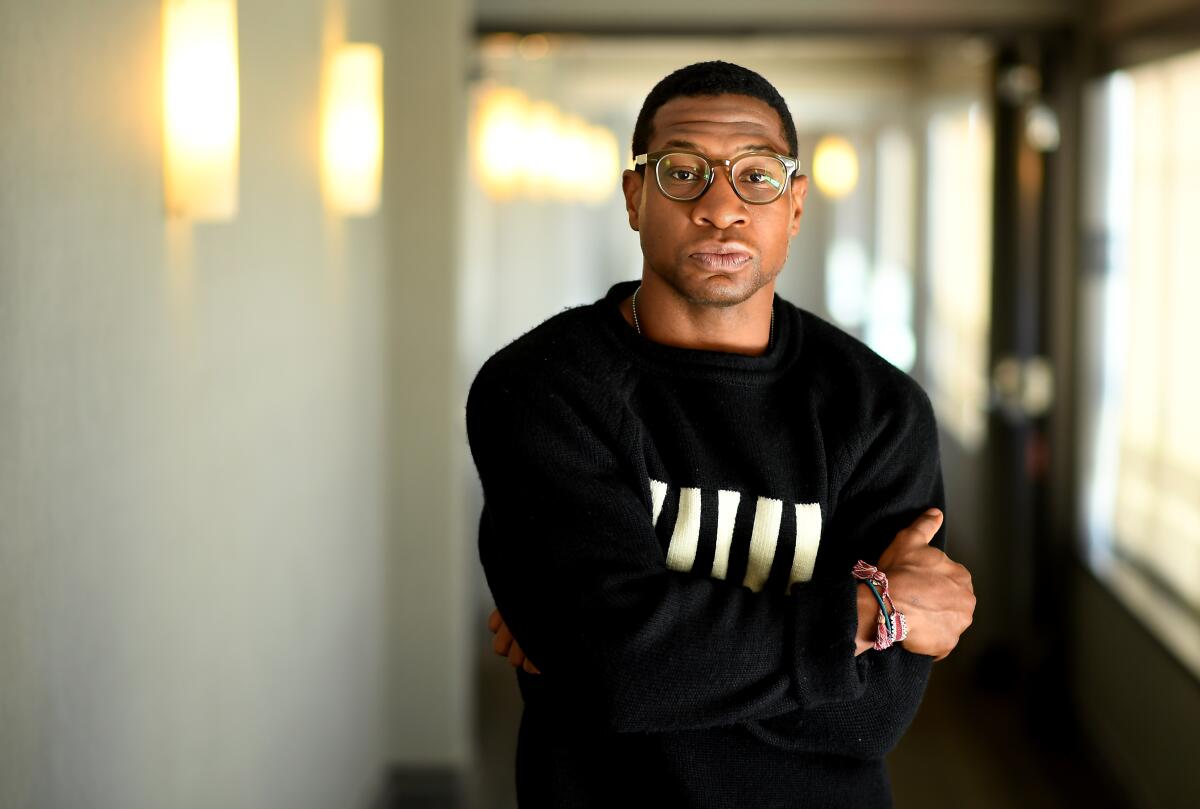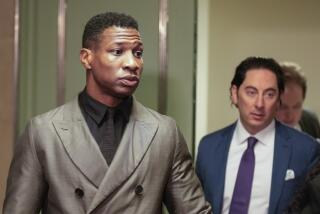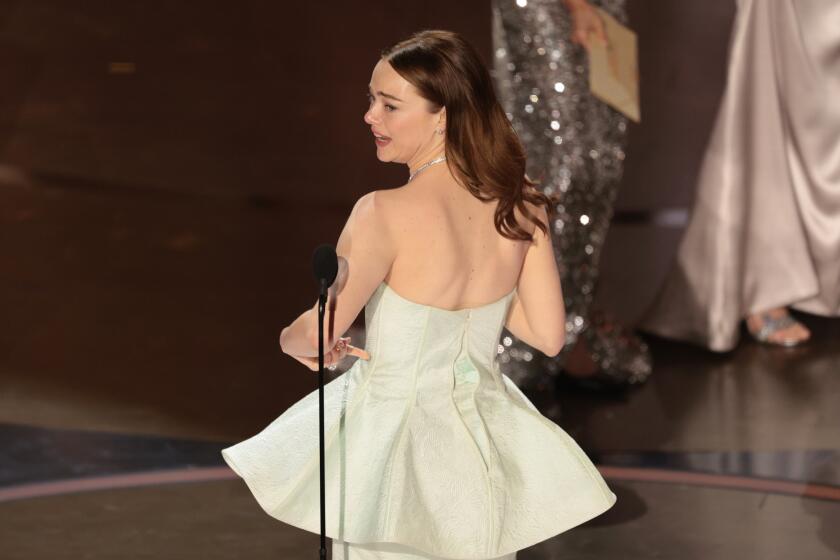‘Last Black Man’ actor finds the sensitive artist within himself and his character

The DNA of Montgomery Allen was there in the screenplay for “The Last Black Man in San Francisco.” But “anyone who has siblings knows DNA does not a person make,” says Jonathan Majors, who plays Montgomery in the film. “The ‘how’ is kind of the actor’s work.”
“Mont” is best friend to Jimmie Fails — a heightened version of the real Jimmie Fails, who co-wrote the film‘s story with director Joe Talbot inspired by his own life. Fails is fixated on the grand house with a “witch hat” roof that he brags was built by his grandfather, and he and Mont take over the house when it suddenly becomes vacant.
It’s a story about gentrification and racial sidelining, and a coming-of-age tale — but told in the romanticized realm of fable.
“It’s an exploration of something so specific that it does kind of become magical,” Majors said, “like in the way that the town is really being examined. If you look at anything under a microscope, it seems impossible that that’s actually happening. There’s beauty in it, and there’s complexities that you wouldn’t know if you just saw it.”
Majors, 30, studied acting at Yale. Small roles in “Hostiles” and “White Boy Rick” preceded his performance in “Last Black Man,” which Manohla Dargis of the New York Times called “a mournful heartbreaker.”
Mont is a sensitive artist always armed with a sketchbook, but he earns money as a fishmonger. He’s also an aspiring actor and director. He lives with his blind grandfather, played by Danny Glover, and shares his bedroom — as well as a rarely seen platonic intimacy — with Jimmie. Even though the film has fable qualities, Majors didn’t give a larger-than-life performance.
“No, I think it’s natural,” he said. “That individual literally thinks differently. And how you think is how you behave, right? So he behaves truthfully under his real circumstances — at least that was my hope in portraying him.”
Majors and Fails became inseparable during the shoot, developing a very real friendship chemistry. The film’s star had no prior training or experience in front of the camera, so Majors became a de facto acting coach — just like his character.
“We had such an ease between us,” said Majors. “I could see where he was coming up against unknown territory, and I just said, ‘This is possibly how you can navigate it.’ He in character, and me in character, and I’d just tell him — as Mont would do — ‘Well, you could try it this way.’”
One of the great, revealing Mont moments in the film is when Kofi (Jamal Trulove) gets into a tense altercation with his group of macho guys. Mont walks up to the fray like a theater director, and says to the gathering of toughs: “Good, good, excellent. Great news is, you’re all doing marvelous work.” The fight defuses through sheer bewilderment at this enigmatic, tenderhearted act.
Majors auditioned with that scene, but in the original script Mont does a magic trick. On the day they shot it, he and Talbot felt that wouldn’t work anymore, and the end result was “full-on improvisation.”
“There’s a guy, Paul Mullins, who directed me one summer in ‘Our Town,’” Majors said, “and he would always say ‘Good, good, excellent.’ I just thought it was the funniest thing in the world, you know. If you’ve been in drama school for eight years, you’ve got teachers in your head all the time. It was a full tribute to them.”
Majors was born in Lompoc, Calif., and moved to Texas as a boy. His mother is a Methodist pastor. Jumping around between cultures — including Yale — as a black man made him keenly observant, with a gift for switching codes.
“You speak to be understood, right?” he said. “And you’re understood so you can be felt. And you’re felt so you can get what you want.”
That ability fed into his portrayal of Mont, who studies the foulmouthed speech patterns of the street gang as well as the impassioned rhythms of the street preacher —and tries them all on in a big, theatrical performance at the climax of the movie.
“He has multiple codes,” Majors said, “and he can take on those codes so quickly because he’s so empathetic. I want to know what Mont’s point of view would be on Donald Trump.” He laughed.
Montgomery was modeled after a friend of Talbot’s and Fails’ named Prentice. Before production began, Majors said he could do an “interview project” on the real Prentice and capture his mannerisms and personality. But he strongly suggested bringing his own, original character to life — which Talbot gladly accepted.
“No one wants to say, ‘OK, I think there’s a Picasso here, but just draw this,’” said Majors, “which is anathema to the Montgomery that we meet, who is individual and cannot be defined.”
More to Read
Only good movies
Get the Indie Focus newsletter, Mark Olsen's weekly guide to the world of cinema.
You may occasionally receive promotional content from the Los Angeles Times.






